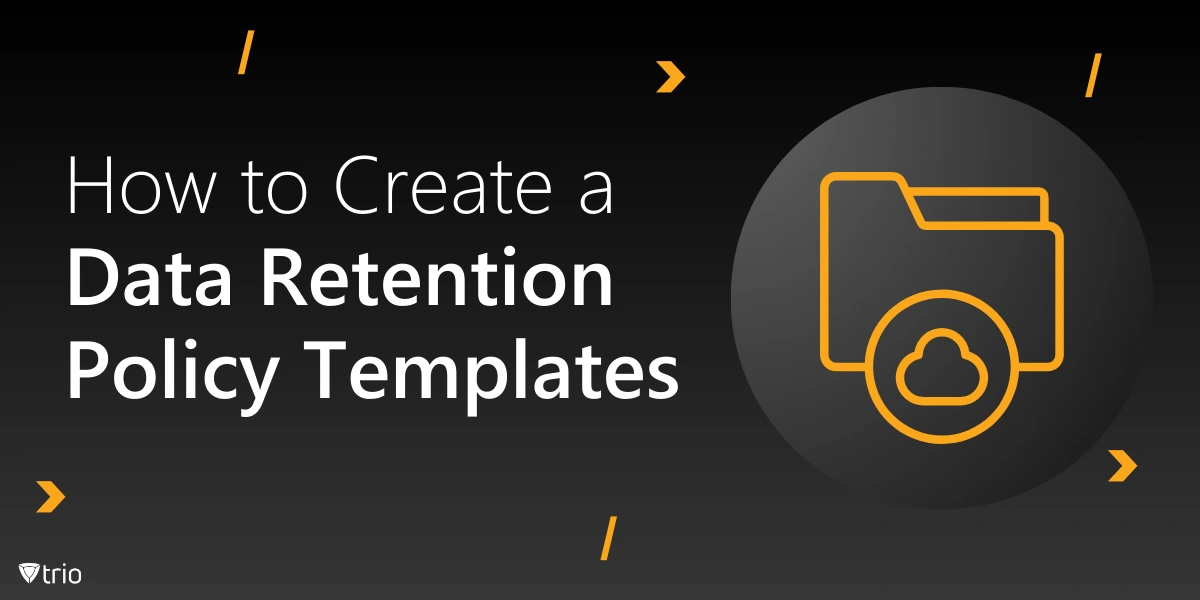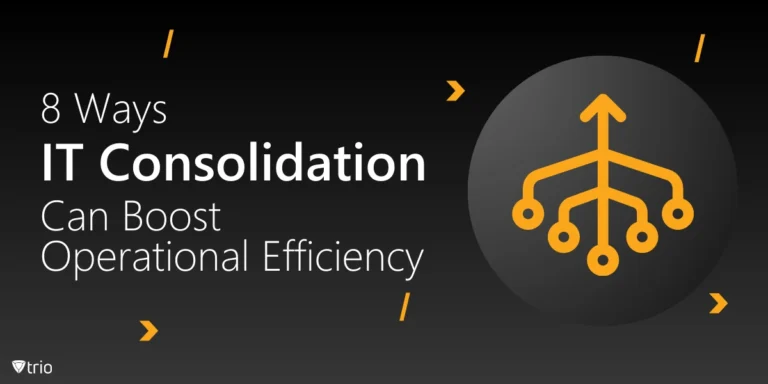In the digital era, data is one of the most valuable assets for any organization. Whether it’s customer information, employee records, financial data, or communication logs, organizations handle vast amounts of data daily. However, managing, storing, and eventually disposing of this data responsibly is a significant challenge. This is where a Data Retention Policy comes into play.
What Is Data Retention?
Data retention refers to the practice of storing and managing data for a specific period to meet business, legal, and regulatory requirements. Organizations generate vast amounts of data daily, including emails, customer records, financial documents, and operational logs. Without a structured approach to managing this data, it can become overwhelming, costly, and pose security risks.
A Data Retention Policy is a formalized document that outlines an organization’s rules and procedures for managing data throughout its lifecycle. It specifies what data should be retained, the duration of retention, how it should be securely stored, and the process for proper deletion or data archiving. The policy aims to strike a balance between retaining necessary information and minimizing data storage costs and risks.
In addition to meeting regulatory compliance, data retention policies also contribute to operational efficiency by ensuring only relevant data is maintained. Data that no longer serves a purpose or has exceeded its retention period is securely deleted, reducing the risk of unauthorized access and data breaches.
Lastly, a data retention policy serves as a reference document for employees and stakeholders, helping them understand their responsibilities in managing data properly.
Importance of a Data Retention Policy
A data retention policy is crucial for regulatory compliance, as many industries are subject to strict data protection laws, such as the General Data Protection Regulation (GDPR) and Health Insurance Portability and Accountability Act (HIPAA). Non-compliance with HIPAA and other regulations can result in severe legal and financial consequences.
Beyond compliance, a data retention policy enhances data security. Outdated or unnecessary data is often a target for cybercriminals. By systematically removing old and irrelevant data, organizations reduce their exposure to data breaches and unauthorized access.
Efficient data management also leads to cost savings. Storing large volumes of unnecessary data can be expensive, especially when using cloud storage solutions. A retention policy helps organizations optimize their data storage infrastructure and reduce costs associated with long-term storage.
Lastly, having a clear policy improves operational efficiency. Employees can easily locate and access relevant information without sifting through redundant data. This results in better decision-making, faster response times, and increased productivity.
Key Components of a Data Retention Policy
Some key components of a data retention policy include:
- Data Classification: Clearly define the types of data your organization handles, such as customer data, financial records, employee records, and operational logs.
- Retention Periods: Specify how long each type of data should be retained based on legal requirements, industry standards, and business needs.
- Storage Guidelines: Outline how data should be securely stored, whether on physical servers, cloud platforms, or hybrid systems.
- Data Deletion and Archival Processes: Detail how data will be securely deleted or archived after the retention period expires.
- Roles and Responsibilities: Assign clear responsibilities to individuals or teams responsible for managing and enforcing the data retention policy.
- Compliance and Auditing: Include processes for regular audits to ensure compliance with the policy and relevant regulations.
- Training and Awareness: Educate employees on their roles in adhering to the data retention policy.
- Policy Review and Updates: Regularly review and update the policy to accommodate changes in laws, regulations, or business requirements.
Best Practices for Implementing a Data Retention Policy
The best practices for implementing a data retention policy include:
- Understand Legal and Regulatory Requirements: Research applicable laws and regulations that govern data retention in your industry.
- Involve Key Stakeholders: Collaborate with legal, IT, and compliance teams when drafting and implementing the policy.
- Use Data Management Tools: Leverage automated tools and software to classify, store, and delete data according to the policy.
- Conduct Regular Audits: Periodically review data retention practices to ensure compliance with the policy.
- Train Employees: Provide regular training and resources to ensure employees understand and follow the data retention policy.
- Focus on Data Security: Ensure encryption, access controls, and secure deletion processes are in place.
- Keep It Flexible: Build flexibility into the policy to adapt to changing regulatory requirements and technological advancements.
- Document Everything: Maintain thorough documentation for accountability and transparency.

Challenges in Data Retention Policy Implementation
An organization has to face challenges when implementing a data retention policy. Some of them include:
- Complex Regulatory Landscape: Different industries and regions have varying data retention requirements, making compliance challenging.
- Data Overload: Organizations deal with vast volumes of data, which can be difficult to categorize and manage.
- Employee Awareness: Without proper training, employees may inadvertently violate the policy.
- Technology Limitations: Legacy systems may not support modern data retention and deletion protocols.
- Balancing Retention and Privacy: Organizations must strike a balance between retaining useful data and protecting individuals’ privacy.
- Cost of Implementation: Implementing a robust data retention policy requires investment in tools, training, and auditing.
- Data Migration Issues: Transferring data to new storage systems or platforms may pose challenges in maintaining retention rules.
How to Create a Detailed Data Retention Policy Template for an Organization
A well-crafted Data Retention Policy serves as the backbone for managing organizational data securely and efficiently. IT administrators play a key role in drafting, implementing, and maintaining this policy to ensure compliance, optimize storage resources, and mitigate risks associated with data breaches or non-compliance.
1. Define the Policy Scope and Objectives
Start by clearly defining the scope of the policy. Outline the types of data the policy will cover, such as emails, documents, financial records, user logs, backups, or customer data. State the objectives, including compliance with regulations (e.g., GDPR, HIPAA), storage optimization, and risk management. This section should also clarify which departments and systems are included in the policy.
Example:
- Define the types of data (e.g., financial, operational, customer).
- Specify retention periods (e.g., 7 years for financial data).
- Include references to applicable legal and industry regulations.
2. Classify Data by Categories
Organize data into categories to simplify retention rules. Common classifications include:
- Personal Data: Customer and employee personal information.
- Operational Data: Logs, internal documents, and communications.
- Financial Records: Invoices, audits, and accounting data.
Each category should have defined retention periods based on legal, business, or operational requirements.
3. Establish Retention and Deletion Timelines
For each data type, specify how long the data should be retained and when it should be deleted or archived. Create a retention matrix that links data categories with retention periods and disposal procedures.
Example:
- Emails: 3 years
- User activity logs: 6 months
- Financial records: 7 years
4. Define Data Storage and Security Protocols
Specify where data will be stored (on-premises servers, cloud platforms, or hybrid systems). Outline encryption standards, access controls, and regular security audits.
5. Implement Data Disposal Procedures
Describe secure disposal methods such as data wiping, physical destruction, or archiving. Ensure IT admins follow documented procedures to prevent unauthorized access post-deletion.
6. Document Roles and Responsibilities
Clearly define roles and responsibilities for IT admins, compliance officers, and department heads. Outline accountability for monitoring, enforcement, and auditing of the policy.
7. Create a Compliance and Review Plan
Set a schedule for periodic reviews of the policy to ensure it remains aligned with regulatory changes and evolving business needs. Implement monitoring tools to track compliance and generate audit logs.
8. Communicate the Policy
Ensure stakeholders, including employees, are aware of the policy. Provide training sessions and documentation to promote compliance.
9. Provide a Policy Template Example
Offer a downloadable template with predefined sections, including:
- Policy Purpose
- Data Categories and Retention Periods
- Compliance Framework
- Roles and Responsibilities
- Security Measures
- Archival and Disposal Procedure
Download Our Free Data Retention Policy Template
To get started use our ready-made data retention policy template now:
How Mobile Device Management Solutions Help with Data Retention
Mobile Device Management (MDM) solutions play a crucial role in enforcing data retention policies across an organization’s mobile ecosystem. With employees increasingly using smartphones, tablets, and laptops to access corporate data, ensuring that data retention rules are consistently applied becomes more complex. MDM solutions provide centralized control, allowing IT administrators to enforce retention policies across all devices seamlessly. These tools can automate data backups, define retention timelines for specific data types, and ensure that data stored on mobile devices aligns with organizational policies. This helps reduce the risk of data loss, ensures compliance with legal requirements, and simplifies data recovery processes when needed.
In addition to enforcement, MDM solutions offer advanced monitoring and reporting capabilities. IT administrators can track how data is accessed, shared, and stored across mobile devices. This visibility is critical for identifying potential breaches of retention policies or unauthorized data storage. Furthermore, MDM platforms can generate audit trails, providing proof of compliance during regulatory inspections. By enabling granular controls, such as remotely wiping data from devices that are lost or no longer in use, organizations can prevent accidental retention of sensitive data beyond the defined timelines.
Lastly, MDM solutions ensure that mobile devices remain secure, which directly impacts data retention compliance. Encryption, secure authentication, and restricted app permissions safeguard sensitive data from unauthorized access. Additionally, MDM tools allow organizations to define location-based or role-based data retention rules, ensuring that data is retained only where necessary and deleted when no longer required. This not only optimizes storage resources but also minimizes the risks associated with retaining unnecessary data. In essence, MDM solutions act as a bridge between policy creation and real-world enforcement, ensuring that data retention practices are uniformly applied across all mobile endpoints.
See Trio in Action: Get Your Free Trial Now!
Conclusion
A well-implemented data retention policy is essential for compliance, security, and operational efficiency. By understanding its importance, incorporating key components, and following best practices, organizations can better manage their data lifecycle while mitigating risks. Although challenges exist, they can be addressed with proper planning, investment in technology, and employee training.
For organizations managing extensive data across multiple devices, Trio’s MDM solution can streamline policy enforcement, enhance security, and ensure compliance across all endpoints. Try out Trio’s free trial today!




